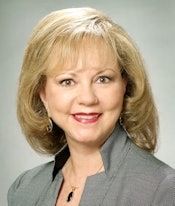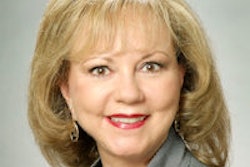
You're not sure how you got here, but it's fair to say overhead costs dictate everything you do. You work long hours but it never seems to be enough. The practice is struggling, and if something doesn't change soon, you're going to burn out long before you create the successful practice you've always envisioned.
Out-of-control overhead costs plague many practices, leaving dentists feeling overwhelmed, frustrated, and even a little stuck. After all, if all your money goes toward skyrocketing overhead costs, you can't invest in the technology your practice needs to succeed or even put money away for your retirement.
Overhead costs should never reach more than 55% of collections. Yes, you read that right, 55%. If your costs are well above this benchmark for practice success and profitability, it's time to make some changes to reduce those costs and increase your profits. Here's how.
Activate your recall system
 Sally McKenzie, CEO of McKenzie Management.
Sally McKenzie, CEO of McKenzie Management.This is one of the most overlooked systems, yet it's also one of the most powerful when it comes to generating revenue and improving patient retention. How can you fix it, you ask?
First, empower your patient coordinator to take control of the recall system, and give specific goals to meet each day, such as making a certain number of patient phone calls and scheduling a certain number of appointments. Be sure to arm the coordinator with a sales script and all the information needed to convince patients it's time to go forward with necessary treatment. And, of course, make sure your coordinator knows to schedule your hygienists to produce three times their daily wages.
The result? You'll schedule more treatment, patient retention and profits will rise, and those pesky overhead costs take a nose dive.
Don't hire too many employees
Even if your team is demanding it, don't hire new employees unless you know for sure you actually need them. Just because certain tasks aren't getting done doesn't mean a new hire will magically fix that or make your practice more productive. It may just be your team members don't have clear job descriptions and aren't sure which tasks they're responsible for.
“If all your money goes toward skyrocketing overhead costs, you can't invest in the technology your practice needs to succeed or even put money away for your retirement.”
If you want to fix that problem and improve productivity, create clear job descriptions and provide your team members with the direction they need. If you need help with this, feel free to visit my website.
Before you decide it's time to start the hiring process, look at how much time patients spend at the front desk. Check in and check out takes about 10 minutes per patient. There are 480 minutes in an eight-hour workday. If your practice sees 15 to 22 patients each day, the front desk is spending between 150 to 220 minutes seeing patients. That's something one front desk person can easily handle.
If the practice is working a normal eight-hour day and one front office person is spending more than 240 minutes with patients, then it's time to hire.
Remember, bringing someone new on board doesn't guarantee an increase in production or practice efficiency. It does, however, guarantee a hike in overhead costs.
Only give out raises when employees meet performance measurements
Payroll costs should be between 20% to 22% of your revenue, with an additional 3% to 5% to cover payroll taxes and benefits. Did you just do a double take? If you're one of those doctors who gives out raises every year whether your employees deserve them or not, I'm willing to bet your payroll costs are well beyond that benchmark -- and it's sending your overhead costs off the charts.
I know you want to keep your employees happy, but you have to stop justifying yearly pay hikes just because Dave has been a loyal employee for so long, or because you know Jill is struggling to make ends meet. You have to take the emotion out of it and only give out raises when they're earned.
You might think a bump in pay will encourage underperforming employees to start meeting production goals and doing their part to help your practice succeed. In fact, the opposite is true. From their perspective, if you just gave them a raise, they must be doing something right. There's no need to change or strive for improvement.
Gone are the days of handing out raises just because an employee asks or because a year has passed since the last raise. Establish a compensation policy and use performance measurements to determine pay raises. Make it clear to your employees when pay raises can be discussed and under what conditions they'll be given. Conduct performance reviews to talk with employees about their progress toward their goals, and make sure they understand exactly what it takes to earn that bump in pay. You'll find your employees will be much more productive and those out-of-control overhead costs will finally start to come down.
Managing overhead costs isn't easy, but if you commit to keeping them in check, you'll reduce undue stress while also growing your profits. Follow these tips and you can make outrageous overhead costs a thing of the past at your practice.
Sally McKenzie is CEO of McKenzie Management, which offers educational and management products available at www.mckenziemgmt.com. Contact her directly at 877-777-6151 or at [email protected].
The comments and observations expressed herein do not necessarily reflect the opinions of DrBicuspid.com, nor should they be construed as an endorsement or admonishment of any particular idea, vendor, or organization.


















